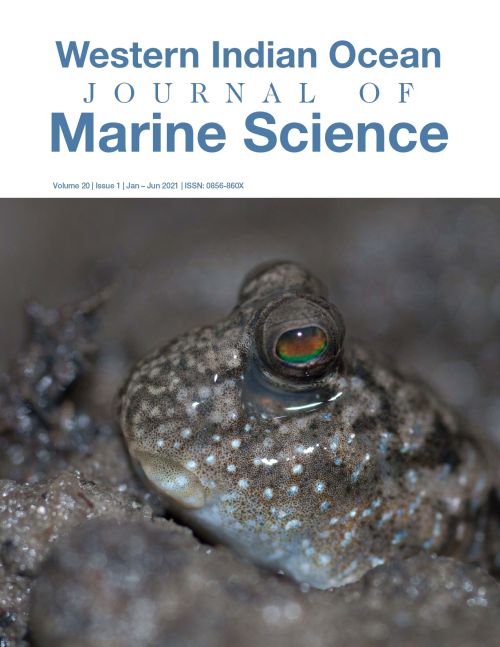Main Article Content
Presence of microplastics in jellyfish (Crambionella orsini) along the Kenyan coast
Abstract
Microplastics are plastic particles less than 5 mm in diameter. These plastics mostly result from degradation of larger plastics. Due to their small size, they are often accidentally ingested by sea faunas, particularly the deposit and filter feeders. However, information on the ingestion of microplastics by sea fauna such as jellyfish is rare. This paper provides evidence of ingestion of microplastics by jelly fishes (Crambionella orsini) along the Kenyan Coast. Samples were taken from three stations (Mikindani and Makupa in Mombasa, and Dabaso in Mida Creek) between 31st January 2018 and 3rd February 2018 using tow nets. Samples were digested using 10 % KOH at 60 °C for 24 hrs and sieved through a 38 µm sieve. Products below 38 µm were filtered using a 0.8 µm Whatman filters, then dried in an oven and viewed under a dissecting microscope for microplastics. Suspected microplastics were confirmed using a hot needle test. Microplastics obtained were mainly fibres of different colours: black, blue, green, colourless, purple, red and yellow. Colourless fibres were the majority accounting for 53 % of the total number of fibres while purple fibres were the least at only 1 %. Mean concentration of microplastics was highest in Dabaso (0.05 mp/g of tissue), whereas in Mikindani and Makupa were almost equal (i.e., 0.03 ± 0.003 mp/g in Mikindani, and 0.03 ± 0.01 mp/g in Makupa). Statistically, the means were not significantly different between the stations (F1, 2 = 1.34; P = 0.43). This study presents evidence of contamination of the Kenyan coastal waters by microplastics and their ingestion by sea fauna such as jellyfish. Results of this study will help reinforce the plastic ban in the country to prevent further accumulation in the environment.






